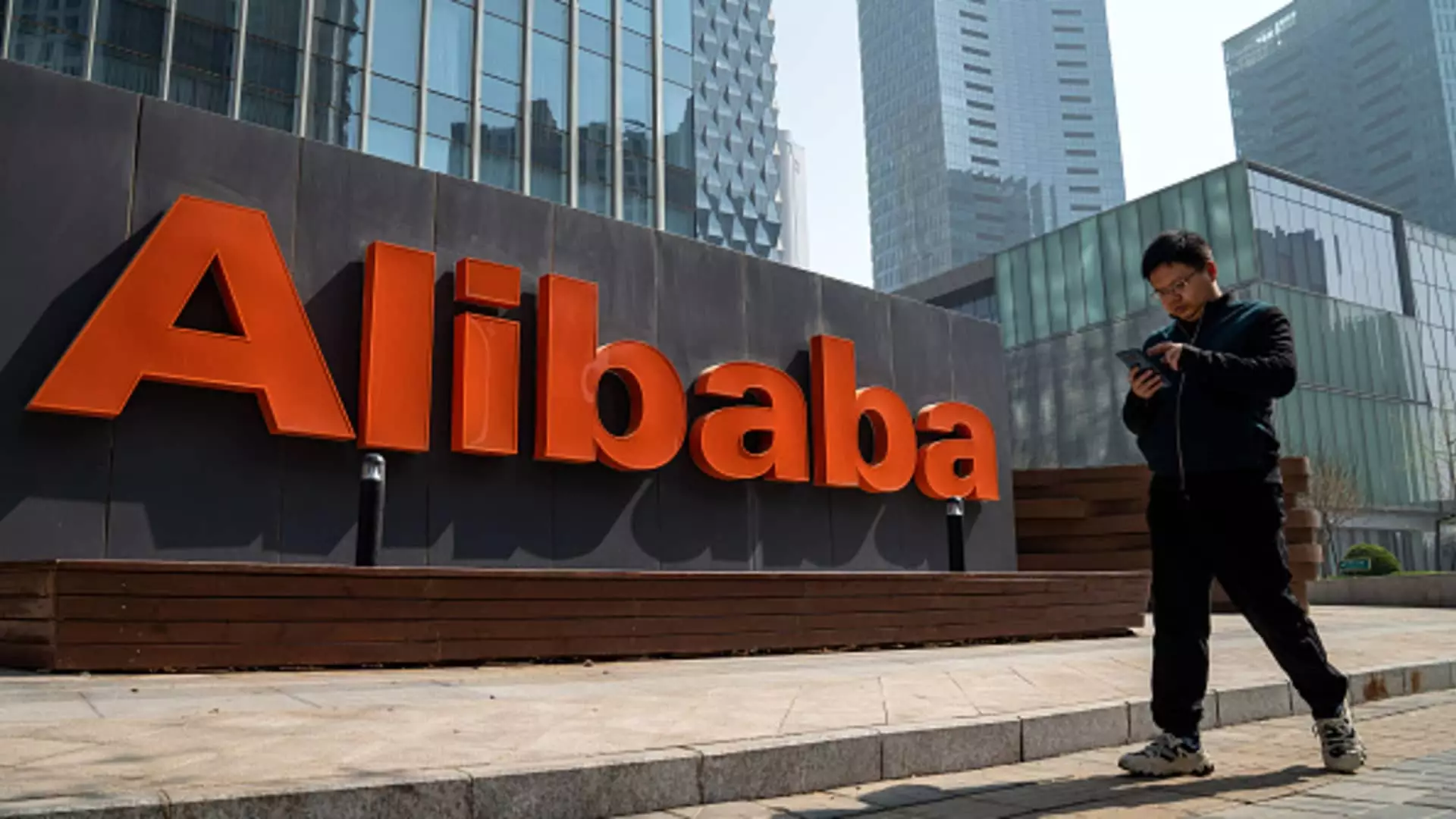In an unexpected twist, Alibaba, the dominant force in China’s e-commerce landscape, reported a robust profit for its September quarter, surpassing market expectations. The company disclosed a striking 58% year-over-year increase in net income, reaching 43.9 billion Chinese yuan (approximately $6.07 billion). This surge is primarily linked to favorable mark-to-market evaluations of its equity investments and a decrease in the impairment of assets, rather than core operational growth. Despite these commendable figures, Alibaba’s revenue fell short of analyst forecasts, illustrating the ongoing challenges posed by China’s sluggish economy that has negatively impacted consumer spending trends.
In comparison to the profit success, revenue figures presented a more complicated picture. Alibaba’s reported revenue for the quarter stood at 236.5 billion yuan, reflecting only a modest 5% rise over the same period last year. This, however, was below the predicted revenue of 238.9 billion yuan, highlighting a disconnect between profit growth and sales performance. The market responded positively to the profit figures, with Alibaba’s shares climbing approximately 3% in premarket trading, indicating investor confidence in the company’s ability to navigate a difficult economic landscape.
The e-commerce sector in China faces significant headwinds. A crucial indicator of overall consumer sentiment, the performance of Alibaba’s flagship platforms Taobao and Tmall, showed only a slight uptick in revenue—only a 1% increase to 98.99 billion yuan. These platforms are critical, making their stagnant growth particularly concerning as they are seen as barometers for the broader retail environment in China. The recent struggles reported by JD.com, another key player in the e-commerce sector, further emphasize the challenges present in the current economic climate.
However, there are signs of potential improvement. Recent stimulus measures announced by the Chinese government, including an ambitious 1.4-trillion-yuan economic package, aim to revitalize growth and curb lengthy declines in the real estate market. Early responses have been promising, with retail sales showing a better-than-anticipated rise of 4.8% in October, alongside a positive resurgence in consumer activity during the Singles’ Day shopping festival, which could signal an uptick in consumer confidence, albeit tentative.
Despite the challenges facing its core operations, Alibaba’s international e-commerce segments appear more resilient, reporting a staggering 29% year-on-year growth in sales, reaching 31.67 billion yuan. This growth signifies Alibaba’s expanding footprint beyond domestic markets and the adoption of differentiated strategies catering to diverse consumer needs.
Moreover, Alibaba’s Cloud Intelligence Group reported a 7% year-on-year increase in revenue to 27.65 billion yuan. Interestingly, this growth rate has outpaced earlier quarters, suggesting an effective repositioning within the burgeoning cloud and AI sectors. CEO Eddie Wu emphasized the company’s reinforced confidence in its core business operations, particularly in the realms of AI and cloud technologies, which positions Alibaba to compete vigorously against not only domestic rivals such as Baidu and Huawei but also leading international firms like Microsoft and OpenAI.
Alibaba’s aggressive foray into AI products, including the launch of its ChatGPT-like product genae, and a recent AI-powered search tool for small enterprises, underlines its commitment to leveraging technological advancements to drive future growth. Additionally, a strategic five-year partnership with Indonesian firm GoTo marks a significant step in enhancing Alibaba’s cloud service footprint across Southeast Asia, suggesting a robust strategy aimed at long-term profit in a highly competitive market.
Alibaba’s journey, however, hasn’t been without obstacles. The company’s transformation and drive to innovate come in the shadow of Beijing’s rigorous regulatory landscape, which imposed considerable restrictions on major tech entities over the last few years. Alibaba’s compliance with these regulations has necessitated a wholesale revamp of its leadership and business strategies, pushing the company toward future growth while ensuring adherence to governmental policies.
As one of the most prominent e-commerce players in the world, Alibaba’s trajectory is intricately linked with the performance of the Chinese economic environment and the intricate dance of regulatory measures. Moving forward, industry analysts remain focused on Alibaba’s strategic pivots and operational resilience as indicators of the broader economic landscape in China. The company’s ability to adapt to shifting regulatory conditions while leveraging its strengths in diverse markets will play a critical role in determining its long-term viability and success.
While Alibaba’s quarterly profits shine brightly amidst a backdrop of economic uncertainty, the challenges encompassing its sales figures highlight the complexities within China’s retail sector. As the company seeks to innovate and expand, all eyes will be on how it navigates this challenging terrain to foster sustainable growth and recovery.

